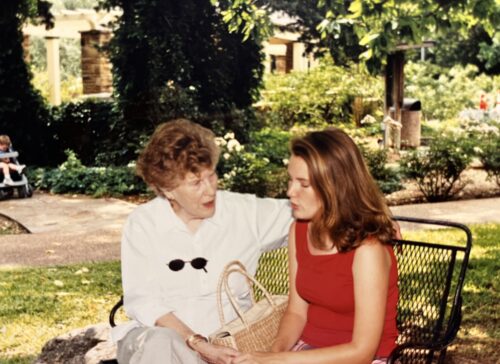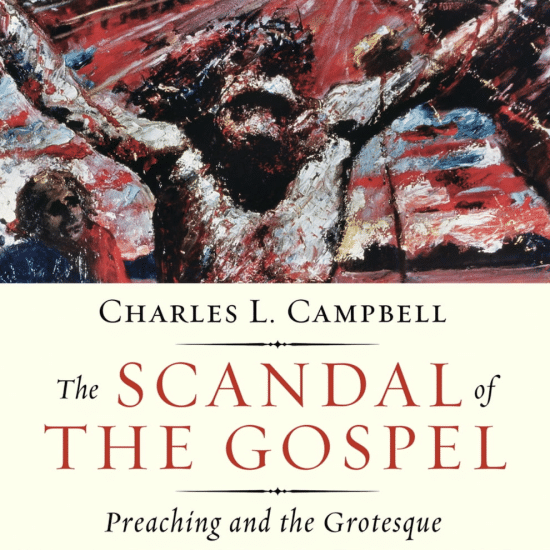
After my grandmother passed away last November, family members began the long process of going through all her belongings. As the last surviving sibling of nine, she had accumulated many items through the years from the estates of her brothers and sisters as well as keeping every card, note, letter, and photo she ever laid hands on (and my grandfather was a newspaper photographer — so many pictures!). From time to time, my mom and aunt send me packets of assorted keepsakes — from wedding programs to cards I sent to newspaper clippings as well as some of the numerous pictures previously mentioned.

Sarah Blackwell
When the most recent packet arrived, though, I was struck by one picture that was included. First, a disclaimer — I feel like most of the photographs of me growing up have formed kind of a canon of my childhood experiences. I have seen them in frames or photo albums or funeral slideshows. They help form what are many of my core “memories” of growing up. Here, though, was a completely new-to-me 8×10 inch black and white photograph.
In it, I am very young; it is probably taken soon after we moved back to Missouri when I was almost 3. I am in my grandparents’ backyard on a tree swing that hung there for much of my childhood. My head is tilted back showing only my smile in a moment of laughter and pure joy. My tiny loafered feet reach for the ground, but it is too late; I am airborne, floating off the incline that the swing went out over. I am soaring in body and spirit. I am full. I am alive.
There is something almost magical in encountering a photograph like this: a candid moment captured in time where I am complete. I have no idea what happened before or after. I can only rely on that one image to speak to me. And speak it did. As I stood holding it in my hands, tears filled my eyes. Where was that child full of trust and unmitigated joy? One who could hold on tight and take the leap outward to the unknown? One who believed her grandparents when they said it was safe? One who let the wind carry her where it may?
I remember being a child and feeling the wind rush past me and the exhilarating feeling in my stomach as the swing would catch at its highest point for just the briefest instant. When I was a child and they talked about the holy spirit flowing through someone, that was the sensation that I imagined. Today I could almost describe it in trinitarian terms as the Creator tree strong and steady that supports and sustains, the Savior swing we hold onto that tangibly carries us along the way, and the Sustainer wind that rushes through us, providing joy and exhilaration. Grace is the buoyancy that lets us soar.

And thus, in a candid photo, the gospel.
In our digital age, even impromptu photos have an air of staging to them. We take tons and then delete down to our few favorite ones — happily dumping anything unflattering or with mistakes. It is unlike the tense and exhilarating moment when opening a package of photos from the film developers to see if you maybe got one or two good shots in the roll. Will there be any worth keeping? Are my eyes closed again? Whose eyes will be red? What is that picture even of? There is something about these tiny glimpses of life that can show us even more than the staged photos of “say cheese.”
Candids are about the intimate moments where we do not know we are being seen as we live in our actual lives. For example, I have a favorite photo of my husband and my son as a preschooler that I captured as I came up the stairs one day to find my husband placing a bandage on my son’s knee after he had fallen. There is something so tender in the act of a father tending to the wounds of a son that would never come across in a staged photograph. One can see the trust in the eyes of the child that his father would be careful, tender, and take care of the problem. Again, the gospel in a picture.
I heard a historian once talk about how much could be learned about the history and culture of the 60s, 70s, 80s, and 90s by the things that were not carefully cut out of the frame (before we curated every picture on smartphones) — what we ate, games we played, how we decorated, what we wore. I think this is true for our personal reactions and expressions, too. The looks of surprise or disgust or sadness or anger are sometimes lost without those candid images.
For instance, there is a photograph of me when I am around four after my aunt’s wedding. I am in my flower girl’s dress next to my cousin, but my tiny fists are balled up on my hips and my head is hung in frustration. Why was I upset? Tired of another picture? Wanting some more cake? I do not know or remember, but I do see my life as it was in that moment. Today, our curated photographic lives are often one-dimensional and do not show the full range of human emotions. Is this not a metaphor for how we are to each other in general? Have we staged our lives so much that we forget what it is to be candid? Do we delete the parts of us that are not perfect and presentable? Do we not want anyone to see the “real” us?
I began to look back through the few candid pictures I have on my phone. Each one is a precious little window into a moment in time… the tiny hand of a younger brother on the back of his big brother, a great-grandmother looking off wistfully while holding a newborn baby, my older son running past a lake suspended in the air like he is flying, my younger son sitting at the table bawling the day his older brother went to kindergarten, my grandmother and I on a bench lost in conversation, children from church leading the VBS songs with arms raised joyfully in the air, cousins skipping rocks in the lake, preschool me resting on my grandfather’s chest with my thumb in my mouth. It is these in-between moments, when we do not know that someone is watching, in which our lives are truly lived.

I could not help but think about all that we could learn if we had just a few photographs of Jesus’s time on Earth. What candid shots might have been snapped to show the gospel? What empathetic look would we have seen in his eyes? What gentle gesture of the hand or wrinkled brow of concern? Could we see how he leaned in when listening to the ailing? Might we capture an eye roll at a Pharisee? Would a grin cross his face at some antics of the disciples? While we cannot capture Jesus in the candid moments, we do know that he sees us in all the in-betweens. He can tell when we are not exactly sure what kind of reaction to have or when we are overcome with emotion. He watches as we make up our minds and when we seethe with anger. He gives us grace for all the many sides of us that only the careful observer might ever notice.
And so, a spiritual challenge for this week. Look for the candid moments. Capture grace. Take the picture with an eye to spotting a glimpse of the in-between times when we actually live our lives. Let these pictures be a testimony to future generations of love, anger, grief, joy, silliness, compassion, boredom, and wonder. Print them out and leave them for your grandchildren. May we find ways to show the gospel in those candid moments of life that are not posed or staged, but authentic, genuine moments of life abundant.
Sarah Blackwell is a contributing writer at Word & Way and a graduate of the Gardner-Webb School of Divinity. She is an adjunct instructor in the Religion and Philosophy Department at Wingate University and a D.Min. student at McAfee School of Theology. Her phone photo storage is constantly full. Her intergenerational faith formation book, God is Here is available through Amazon and other online book retailers. Follow her writings at www.proximitytolove.org.






